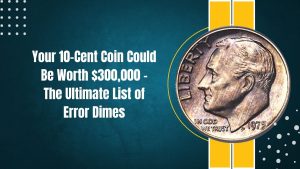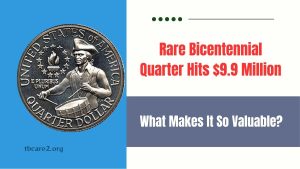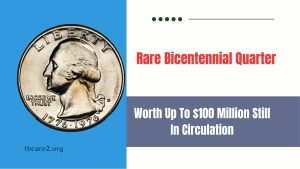Bicentennial quarters, issued in 1976 to celebrate the 200th anniversary of the United States’ independence, are highly collectible. While most of these coins are worth only their face value of 25 cents, a few rare variations can fetch significant sums, often exceeding the value of gold. If you happen to have one of these elusive quarters, you might be sitting on a small fortune.
Contents
Bicentennial Quarter
The Bicentennial Quarter was produced to mark the nation’s 200th birthday, and its design is a departure from the standard quarter. The reverse side features a drummer boy and the inscriptions “200 YEARS OF FREEDOM” and “E PLURIBUS UNUM.” Despite being mass-produced, several rare versions have surfaced, making them valuable to collectors.
Clad Proof Quarters
The clad proof version of the Bicentennial Quarter was struck for collectors, with a much higher quality than regular circulating coins. These proof coins were minted in limited quantities and can be worth several hundred dollars in excellent condition. Due to their shiny, mirror-like finish, they are easy to distinguish from regular coins, making them highly sought after.
Silver Proof Quarters
The silver proof Bicentennial Quarters are one of the most valuable types of the series. These quarters contain 90% silver, unlike their clad counterparts.
As silver prices have risen, these coins have become increasingly valuable, and a silver proof Bicentennial Quarter can be worth hundreds of dollars, depending on its condition and rarity.
Error Coins
Error coins are always in demand among collectors, and Bicentennial Quarters are no exception. Some of the more rare error types include off-center strikes, double dies, and missing mint marks.
These coins are often worth much more than standard Bicentennial Quarters, and if you find one with a noticeable error, you could be in possession of a rare and valuable item.
Doubled Die Quarters
A doubled die quarter is a coin that has been struck twice, creating a doubling effect on certain parts of the design. This is a rare mistake, and the doubling is often most visible on the lettering and numbers.
A doubled die Bicentennial Quarter can fetch substantial sums at auction, depending on the severity of the error. Collectors covet these coins, as they represent a unique mistake in the minting process.
Special Mint Sets Quarters
Special Mint Sets (SMS) were another way the U.S. Mint produced Bicentennial Quarters for collectors. These coins were struck with specially prepared dies and have a satin-like finish.
Though these coins were not made in as large numbers as regular circulation quarters, they were still mass-produced and are less valuable than some other types of Bicentennial Quarters. However, those in pristine condition can be worth more than their face value, especially to dedicated collectors.
| Coin Type | Rarity Level | Estimated Value | Key Features |
|---|---|---|---|
| Clad Proof Quarter | Medium | $10-$150 | Mirror-like finish, limited edition |
| Silver Proof Quarter | High | $300-$500 | 90% silver, collector’s item |
| Error Quarter | Very High | $500-$1000+ | Off-center strikes, missing mint marks |
| Doubled Die Quarter | High | $200-$500 | Doubling effect on design |
| Special Mint Set Quarter | Medium | $50-$150 | Satin finish, collectible set |
| Regular Bicentennial Quarter | Low | $0.25 | Standard circulation coin |
| Uncirculated Quarter | Medium | $50-$100 | Minted for collectors, never used in circulation\ |
Bicentennial Quarters offer an exciting opportunity for coin collectors, especially when it comes to rare error coins, silver proof coins, or other limited-edition types. While many of these quarters are not worth more than their face value, the rarer ones can command impressive prices.
If you’re lucky enough to find a rare Bicentennial Quarter, it’s worth taking the time to verify its authenticity and potential value. These coins may not just be pieces of history; they could be valuable treasures in your collection.
What makes a Bicentennial Quarter rare?
A Bicentennial Quarter becomes rare due to variations in the minting process, such as error coins, silver content, or unique production methods like proof and special mint set editions.
How can I tell if I have a rare Bicentennial Quarter?
Look for errors in the minting, such as doubled dies, off-center strikes, or missing mint marks. Silver proof quarters and proof versions are also valuable and easily identifiable by their shiny, mirror-like finish.
Are all Bicentennial Quarters worth more than face value?
No, most Bicentennial Quarters are worth only their face value of 25 cents. However, rare versions like silver proofs, error coins, and specially minted types can be worth significantly more.







